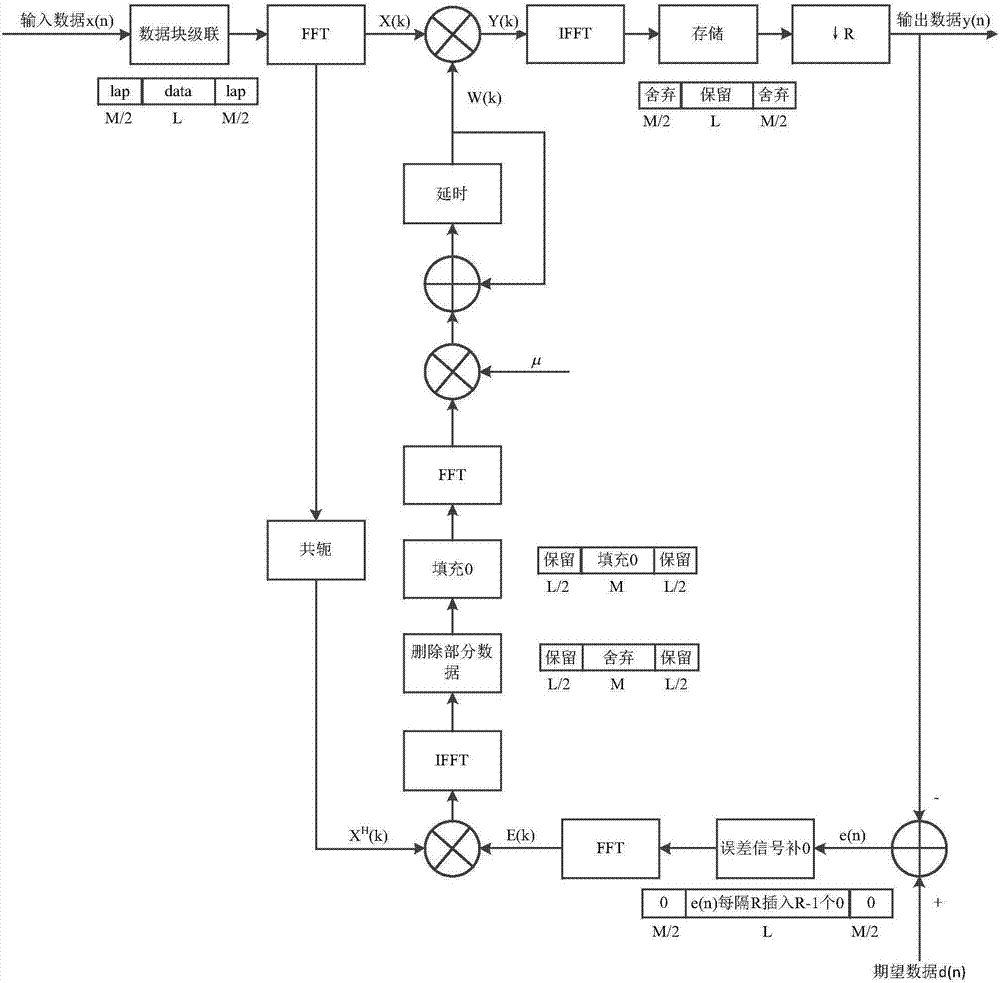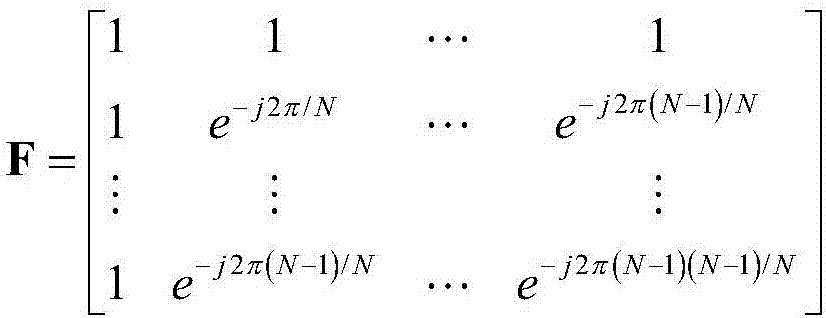FBLMS (Frequency-domain Block Least mean square) adaptive filtering method
An adaptive filtering, frequency domain technology, applied in the direction of adaptive network, impedance network, electrical components, etc., can solve the problems of low computational complexity, inability to equalize non-minimum phase systems, etc., to achieve the effect of low computational complexity
- Summary
- Abstract
- Description
- Claims
- Application Information
AI Technical Summary
Problems solved by technology
Method used
Image
Examples
Embodiment Construction
[0015] refer to figure 1 . According to the present invention, firstly, the input data sequence to be filtered is serially converted into parallel data blocks with a length of L, and M / 2 data cascaded respectively from adjacent front and back parallel data blocks form a stage with a length of N=L+M Connect the input data blocks, and perform fast Fourier FFT operation on the cascaded input data blocks to obtain N frequency domain input data, and then multiply the N frequency domain input data and N filter weight coefficients one by one, Then do N points on the frequency domain data filtered by N filters and perform inverse Fourier transform IFFT to obtain N filtered frequency domain data, discard M / 2 data at both ends of the time domain data, and retain and store N filtered data The data centered in the time domain data; for the reserved centered data, the ratio R of the tap rate of the equalizer to the signal rate is used to extract at equal intervals, and output the first nu...
PUM
 Login to View More
Login to View More Abstract
Description
Claims
Application Information
 Login to View More
Login to View More - R&D
- Intellectual Property
- Life Sciences
- Materials
- Tech Scout
- Unparalleled Data Quality
- Higher Quality Content
- 60% Fewer Hallucinations
Browse by: Latest US Patents, China's latest patents, Technical Efficacy Thesaurus, Application Domain, Technology Topic, Popular Technical Reports.
© 2025 PatSnap. All rights reserved.Legal|Privacy policy|Modern Slavery Act Transparency Statement|Sitemap|About US| Contact US: help@patsnap.com



